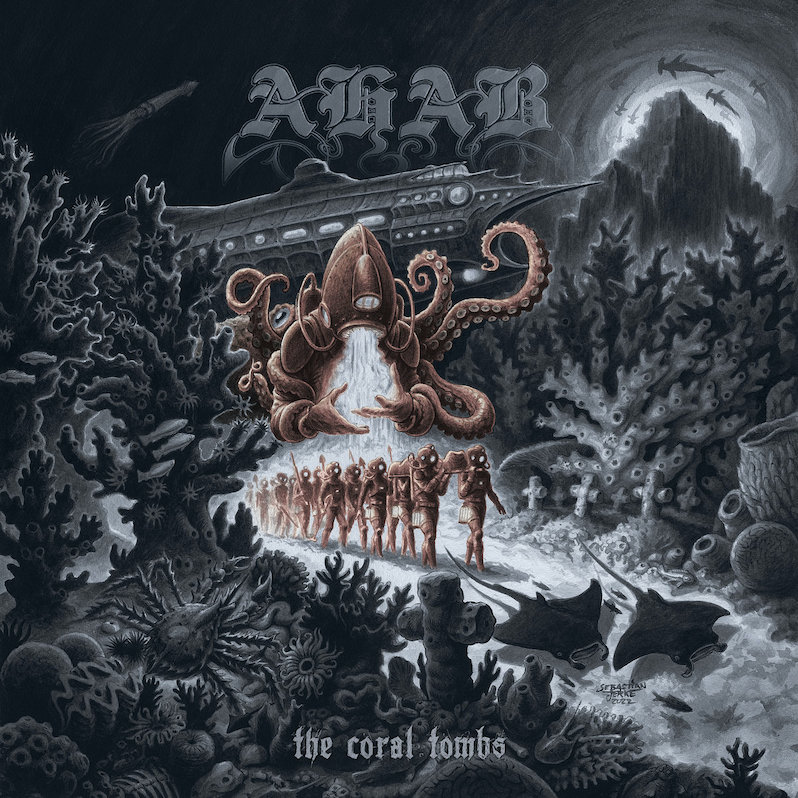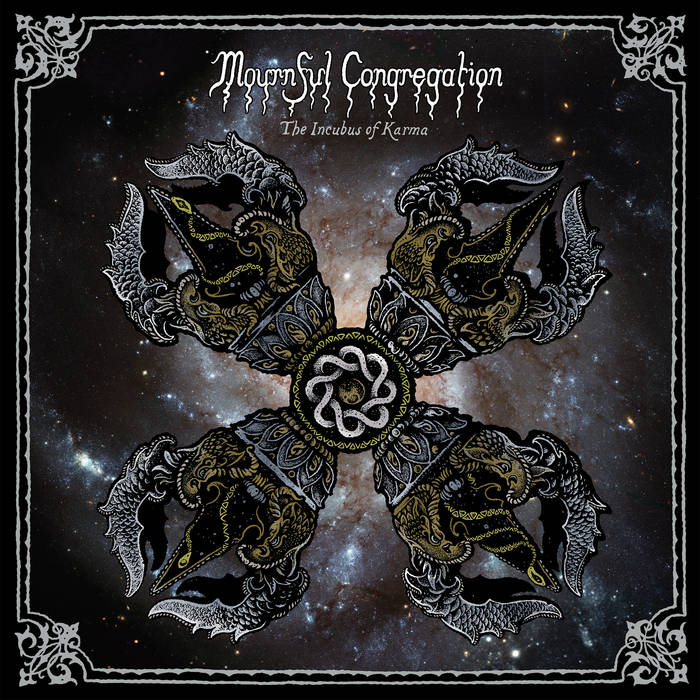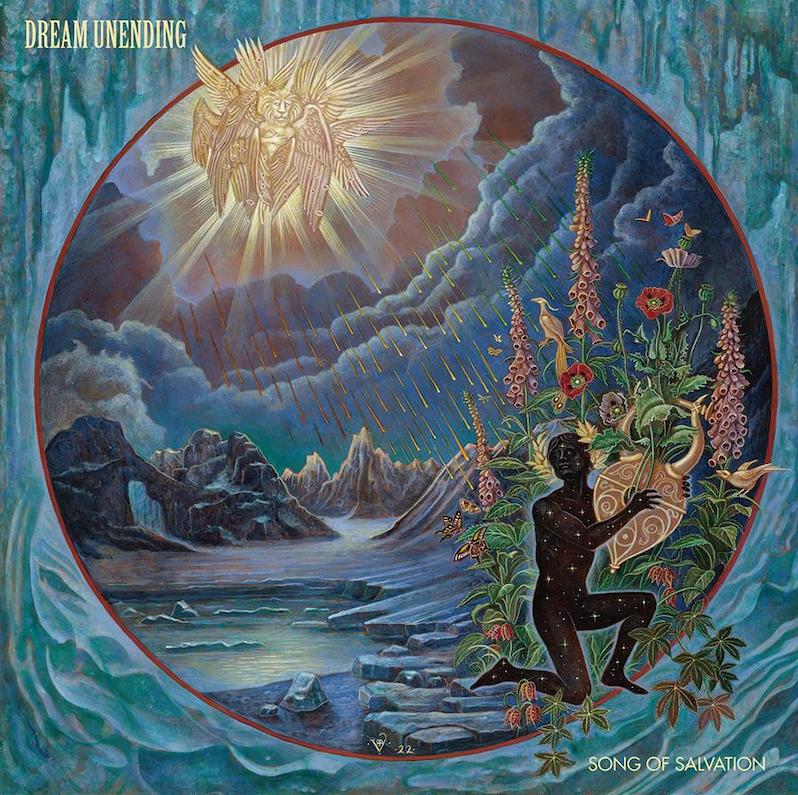Ahab – The Coral Tombs

After a brief, extreme opening, it becomes clear on The Coral Tombs that Ahab’s dabbling with more explicit progressive rock influence on The Boats of the Glen Carrig was no mere feint. While some suggest that this new direction borders on post-metal, that designation seems rooted more in trying to parse the intersection of prog and funeral doom occurring here. What better term to use than for the explicitly proggy wing of doom metal? The issue is that the approach here aligns more with a slightly more melodic version of the approach used by other bands blurring the lines between progressive rock and funeral doom such as Esoteric, Mournful Congregation and Bell Witch. This seems largely to piss off exclusively hesher types, the ones that worship at the altar of bands like Thergothon as the platonic ideal for funeral doom and seem in denial that an evolution in approach toward the more melodic and progressive wings of doom occurred sometime in the mid 2000s to early 2010s, wasn’t a fad, and has had long-standing effect on the genre.
But let us move beyond scene politics. As The Coral Tombs carries on, Ahab sees fit to pull out senses of decaying, keening minor key melodies more akin to the golden age of Opeth, another figure that might be a better point of reference. Soulful bends of pinch harmonics and lugubrious melodic lines abound, letting the bottom end act more as a leaden static wall behind what’s occurring rather than merely turning the songs into downtuned soup.
For many, this band’s first two records will forever be the apex of their sound and, to be fair, a case is to be made on that account. The Call of the Wretched Sea and The Divinity of Oceans are two of the greatest traditional funeral doom records of all time, as epochal as they are time-denying, feeling at once like they could have emerged in the late ’80s-to-mid ’90s peak of that particular death/doom hybrid model as much as albums that defined, for those privileged to be aware of them as they came out, exactly when and where you were when you first heard them. But this is where a holistic model of understanding a band’s body of work and trajectory becomes particularly useful; their material from The Giant forward indicated clearly that, as great as those two albums were, they were closer to training that the real identity of this set of players, ways for the group to master the fundamentals of the sonic world they wanted to be enmeshed in while everything that came after would be the works that bore signature traits that could be traced to no one other than Ahab.
These arrangements are curious in that, with but a couple tweaks of tone and occasionally the octave they’re played in, you could pass these off as songs by a true prog band like Flower Kings. While in earlier records, senses of majesty and wonder were deployed by the group in a crooked and despairing way, modeled after Moby Dick, that brilliant and endlessly perfect novel which seeks to capture the ferocious abnegating enormity of the natural world and God which annihilates man as individual, society, and history, this newer approach of Ahab, while still adamantly metallic, seems fit more often to simply let majesty and wonder exist for its own sake. This creates a sense of breath and breadth, letting off of the single-minded focus on emotional devastation which makes songs like “Mobilis in Mobili,” which is so singular in its sense of despair and weight, so much more emotionally effective. But even that song has brief jazz-like stings of descending chromatic licks and dissonant ambiance which call to mind, for a listener like me, moments similar to the more eerie and foreboding passages on something like Yes’ “The Gates of Delirium” or modern day King Crimson than specifically metal influences.
Progressive metal as a form used to mean a rather narrow thing, first being the particularly virtuosic wing of progressive hard rock practiced by groups like Deep Purple and Led Zeppelin at their most adventurous before meaning the wing of traditional heavy metal indebted the most to groups like Yes and Genesis such as Queensryche and early Fates Warning before Dream Theater came along and seemingly permanently defined it as groups playing in their milieu. Ahab has now confidently joined in the modern post-Mastodon wing of groups that would fall under that designation, where those previous walls have crumbled entirely and it once more means groups equally as interested in the imagistic and sensitively arrangement-oriented wings of progressive music as it does the history and lineage of heavy metal. There’s a tense historicity at work here; while heavy metal may have begun as a bedmate to progressive rock, emerging from the same post-psychedelic cloud of ’60s rock and folk, they each have lived twined but ultimately separate lives for the past nearly 60 years and, in this case, each developed their own diehard fanbases interested in maintaining, especially for certain styles, a purity of lineage and a rejection of outsiders. I doubt this new Ahab record will ultimately move people strongly committed to the now-30-plus year lineage of the extreme wing of doom metal and part of me seriously wonders, given its absolute extremity, how it will be received by those more interested in progressive music.
Thankfully, I am a hybrid of both fanbases; this strikes me as, so far, the group’s greatest document. While I admired and found a lot to love in the previous two records that began Ahab’s tilt toward more progressive wings of the world of funeral doom, they definitely were executed with less mastery than those first two still-phenomenal records. The adherents of those early documents from this group weren’t wrong to say that, for years, their fruits when making less theatrical and prog-inflected doom was simply better. But the ramp of improvement shown between The Giant and The Boats of the Glen Carrig here becomes a steep upward slope. The Coral Tombs ultimately is a peer to the group’s first two records in terms of quality of material but becomes, in my estimation, slightly superior in being more idiosyncratic, closer to a style owned by Ahab rather than inherited by others. If Glen Carrig showed that the band’s experiments with outside sounds and ideas could provide worthwhile enrichment to their material, then Tombs confirms that this is the path forward, hand-in-hand with the extreme heft and emotional brutality the group already has so keenly mastered.
Which ultimately leads to the element of Tombs that, if I’m right, will be why it sticks with me and so many others through the year. (Doom metal of this size and grandeur is notoriously difficult to parse on first pass and, despite having sat with the record for a few weeks now, it still feels like it possesses many more coves and sensitive tear-stained moments of emotional revelation for me.) The Coral Tombs doesn’t just make me excited as I listen to it for the material itself in a solipsistic celebration of excellence; it makes me excited to see what the band might do from here, what new sonic elements or solidities of older elements they might indulge in in the future. This is the same magical element that so often makes debut records so much more thrilling than equally-competent late-era works from groups; we, who believe we never shall die, are always enamored by that sense of future growth and adventure on the horizon. With The Coral Tombs, Ahab restore that excitement.
Label: Napalm
Year: 2022
Similar Albums:
Langdon Hickman is listening to progressive rock and death metal. He currently resides in Virginia with his partner and their two pets.




